
Ice Hockey - Quick Guide
Ice Hockey - Overview
Ice Hockey, also termed as the fastest physical game on the planet, is mostly played in Canada, North America and Europe by modifying a sport called Hurley. But it is believed to have originated in the east coast, Nova Scotia in the early 18th century and then has mainly influenced the west as a winter sport.
Ice Hockey is a game played on an ice-coated surface with skates on the feet, played in between two teams with sticks to hit the puck and score goals against the other team. This game has gained incredible acceptance from the people and is also being played at an international level in the Olympics since 1920s.
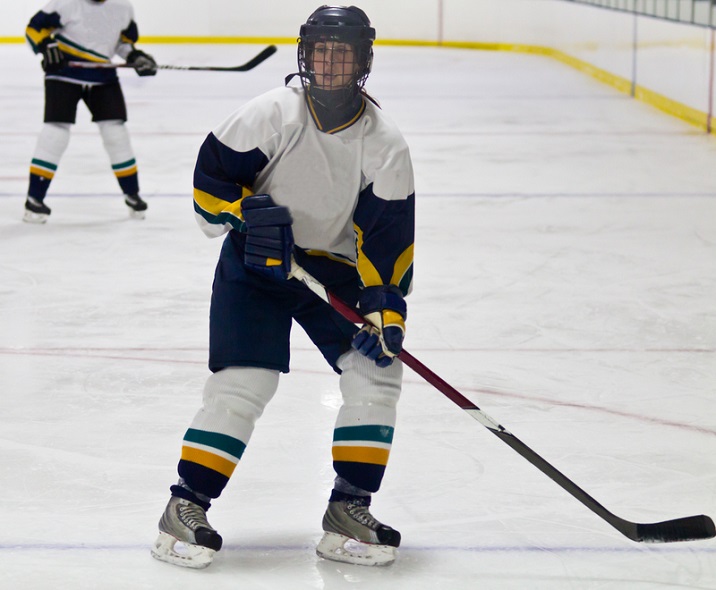
Objective
The primary objective of Ice Hockey is to shoot a puck through the ice-coated playing surface known as rink and strike it into the opponents goalpost with a hockey stick. A team with six players including the goaltender, scores a point by hitting the puck in to the goalpost. The team scoring more number of goals at the end of the game is the winner.
During the game, the puck is passed from player to player on the rink and the opponent team tries to prevent passing of the puck and the opponent goaltender blocks at the goalposts from hitting the goals.
Team Size
Ice Hockey is played between two teams having six players each. The team is divided into five skaters and one goaltender. The skaters have three forward players and two defensemen positioned on the field, and are free to move on the rink. The goaltender has restricted access on the field and only has partial control on striking the puck.
The number of substitutions in this sport is unlimited and can be substituted at any point of time during the play except when the opponent team ices the puck or if the player is penalized. It is played in both mens and womens category.
Ice Hockey - Participating Countries
Ice Hockey is one of the main winter sports played in the West, primarily in Canada and Northern America. Ice hockey with its growing popularity in the west and with quite a good acceptance rate has been used in the entertainment industry as an inspirational heroic sport. Several Hollywood movies, musical albums, television shows are based on this game.
This game, has become quite famous across the globe and conducted through different championship leagues, of which the popular leagues being the National Hockey League (NHL), the Stanley cup trophy, Kontinental Hockey League (KHL) in Eurasia and Asia League Ice Hockey (ALIH). The International Ice Hockey Federation (IIHF) is a 100 year old governing body for this sport with 74 member countries and organizes more than 25 world tournaments in various categories.
Countries Participating in Ice Hockey
Approximately 80 countries are currently playing this sport and 74 countries participate in the championship leagues.
According to IIHF survey of players, the participating countries are highlighted based on the number of players in that region.
Ice Hockey - Playing Environment
Ice Hockey rightly known as the fastest game in the world. It is all about sensible play on skates by gliding through the ice coated rink, a healthy combat between the teams for more goals is to win the game. The main aim of the game is to hit the puck into the other teams goal cage; all the five skating players of a team plan and strategize together to overcome the hurdles opened by the opposing teams players.
Ice Hockey Rink Design
The ice on the rink is made by spraying water all over a concrete surface; the freezing pipes under the surface allow the water to freeze. The ideal thickness of the ice is 19mm.
According to the IIHF, the rink measures 200 feet long by 80 feet wide and is divided into three zones. A red line in the middle of the rink is parallel to two blue lines that splits the three zones equidistant from the respective goal cages on both sides of the rink. The central zone is known as neutral zone and the area with red highlighted circles is the defending zone. The area with blue highlighted circles and opposing net is the attacking zone as shown in the below rink layout.
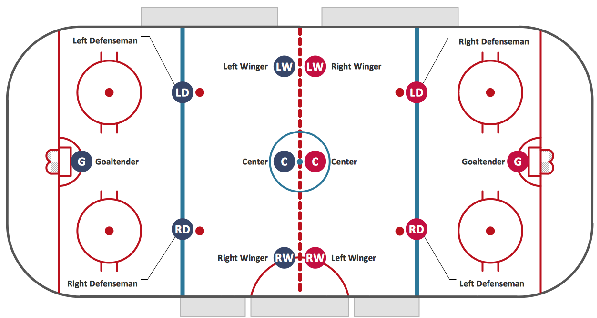
The goal posts or goal cages are at both ends of the rink surface and the goal cages are covered with nets at the back. The goal cages nylon material net ideally measures 4 feet high and 6 feet wide guarded by goaltenders at each end.
Timing of Ice Hockey
Ice hockey game is typically timed for 1 hour with three 20 minute period intervals. The game clock keeps ticking only if the puck is being played by the players on the rink. If there is any halt in the play the game clock is stopped immediately. The attacking and defending teams changes ends of the rink after second and third period intervals and also at the start of overtime.
The play starts with a face-off, when centre player marked in the layout as C from both teams are positioned at the centre of the rink in front of each other and the referee places the puck on the ice between them. The centre players of both the teams try to gain possession of the puck to start the play. Apart from the start of the game face-off is used to resume the play after any stoppage of the game.
In a tie game scenario, 5-minute overtime is given for the play and the team scores a point to win the game. Even after overtime if the game is still in tie, a shootout is played with 3 shooters of each team, the team with more goals wins the game.
Ice Hockey - Equipment
The basic equipment required to play Ice Hockey is the Puck and the Hockey Stick. In addition, there are quite a few other equipment which are discussed below.
The Puck − It is a three-dimensional circular puck made of black vulcanized rubber material. It typically measures about 80 to 85mm in diameter and 25 to 30 mm in thickness. The puck usually weighs from 1 to 1.5kg. It also has a protective covering of 2mm in thickness on the outer side.
Hockey Stick − It is basically made of wood and graphite and are 150 to 200cm in length with flat horizontal extension known as blade. The blade is positioned at an angle of 135o, making the hockey stick to look like the alphabet L. The blade is 25 to 40 cm in length and is a little bent at the end to enable the player to hold the puck on the rink. The dimensions of hockey stick vary from player to player depending upon his height. The goalies hockey stick has a wider blade with a smaller angle positioning compared to the skaters hockey sticks to make it convenient to block the puck near the goal cages.
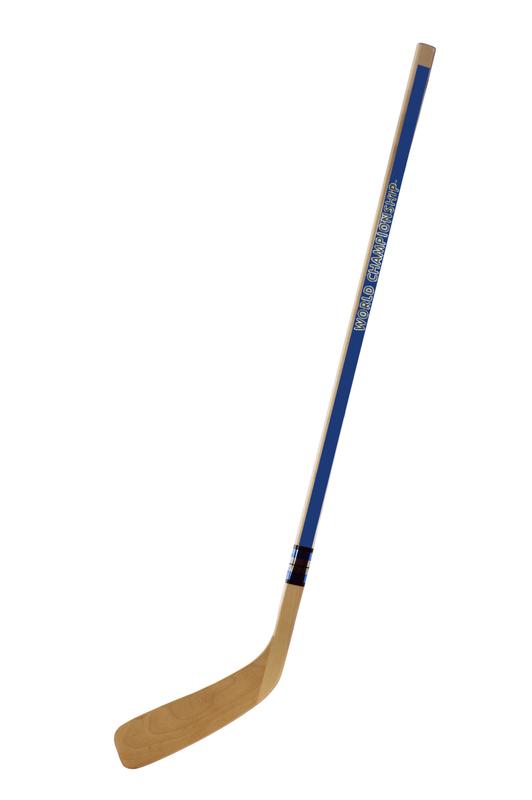
Helmet − An Ice hockey helmet comes with an optional face cage and is mandatory for all the players. These helmets are made up of a stiff however flexible thermoplastic outer, with strong shock absorbent padding on the inside to avoid head and facial injuries.
Mouth Guard − It is worn to avoid teeth, jaw injuries from knock-downs and falls. A custom made plastic mouth guard is obligatory for the players on the ice.
Neck Guard − It comes with outer nylon plates and inner padding as a wound resistant for both skaters and goalies to avoid injuries on the neck and throat areas.
Shoulder & Arm Pads − It is a key equipment with hard outer made of plastic and shock absorbing foam inside. It gives the players a broad-shouldered look. These pads mainly guard the shoulders, chest, spine and ribs in case of collision between skaters in the play.
Elbow Pads − They guards the elbow joints, upper, lower arms and forearms from fractures.
Gloves − Hand gloves made with leather with thick padding linen helps to protect players fingers and hands from strong impacts on the rink.
Hockey Pants − Nylon knee-length pants come with safety belts to hold the hip, tailbone, thigh & pelvic pads on the inner side.
Shin pads − The knee and leg calf protector with strong plastic outer to shield against skates, sticks, pucks and other injuries. Available in different size scales based on the players height and leg measurements.
Hockey Socks − A little different from the original socks, ice hockey socks are made out of knitted wool without the foot portion to cover the shin pads. Foot portion of the player in this game is used to balance the skates.
Ice Skates − Skaters need perfect firm outer shell boots and memory foam inner sole with rounded heels and attachable skate blades which is quite essential for ice hockey skaters. Unlike skaters goalies need thick and blades with more radius and a lesser amount of ankle support to easily glide with his skates. The goalies boot is nearby to the ice surface than a skaters boot to stop pucks from sliding between his boots and skate blades.
Jersey − A nylon material loose coloured shirt with coloured side panels is worn by all the players. Usually the players name and number are mentioned by his team colour.
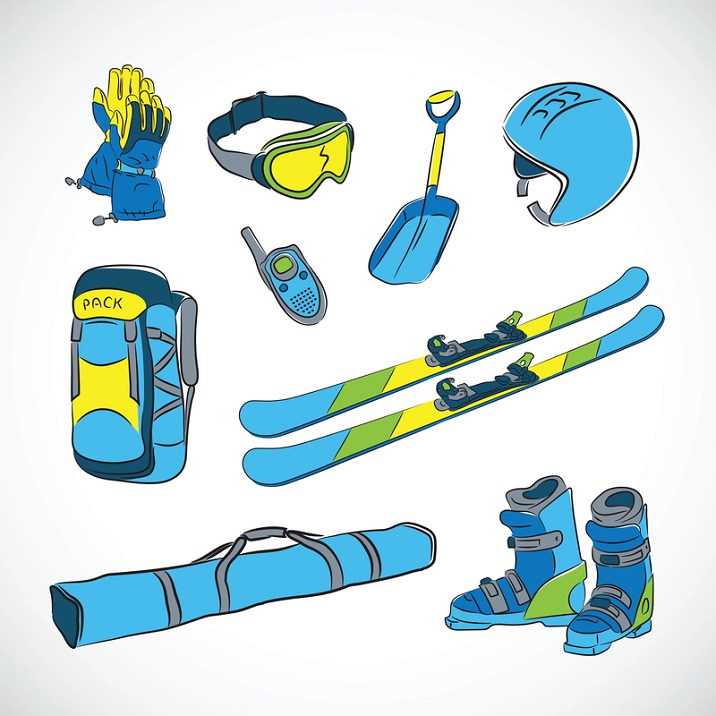
Chest and arm protector − Goaltenders need to put on thick foam padded chest and arm guard extended to the abdomen and knotted with the hockey pants to ensure seamless protection to goalies forearms, biceps, ribs and abdomen.
Blocker − Goaltenders need to wear blockers on one hand to hold the hockey stick. These rectangular padded gloves are used to block the pucks and bounce them back on the ice.
Catch glove or trapper − Goaltenders put on catch glove usually thicker than normal leather gloves on the other hand to block the puck by holding a rapid shot.
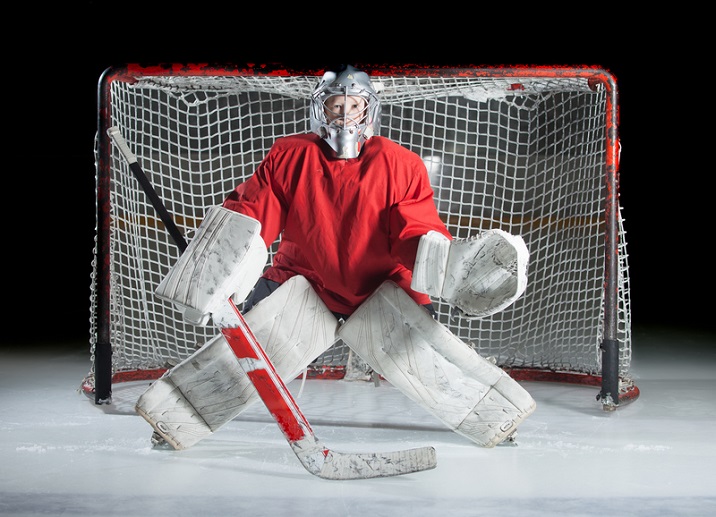
Leg Pads − Goaltenders most noticeable equipment on the ice are the completely flat faced, extensively foam padded leg pads. These pads are worn by goaltenders on top of their shin pads for additional protection and to appropriately block the puck with these pads.
Ice Hockey - Terms
Before familiarizing with the game rules and playing guidelines, its essential to get acquainted with the terms used in Ice Hockey.
Rink − Ice coated playing surface
Blue lines − The lines on the rink surface splitting the attacking and defending zones.
Red line − The centre line dividing the rink in two halves
Goal line − The red line from the goal post to the rink boards just in front of the goal cage.
Goal cage − A trapezoidal area behind the goal line covered by net through rectangular posts.
Neutral zone − The area in the centre of the ice between the two blue lines.
Attacking Zone − The attacking team's playing end from the blue line to the goal cage.
Defensive zone − The defending team's playing end from the blue line to the other end of the board till the goal cage.
Face-off − An approach used to begin the game or start a period after interval or initiate the game after stoppage of play. The two teams line up on the rink in their positions with center players of both the teams at the centre of the ice to gain control of the puck after it is being dropped by a referee onto a face-off spot.
Center player − Player in the forward position in the centre of the ice, responsible for taking control of puck and score goals.
Winger players − Players in forward position on left and right hand side exactly behind the center player to help him in retaining the possession of puck and make goals.
Defenseman − Players positioned behind the forwards on left and right hand side responsible to block the opponents from making goals.
Goaltender or Goalie − Player positioned nearby goal cage to save goals by blocking the puck to enter into the goal line and goal cage.
Extra attacker − A forward player substituted for a goaltender on the ice in either of the teams.
Goal − When a player hits the puck and it goes across the goal line into the goal cage.
Assist − Credited to maximum up to two players who assist in passing or repelling the puck to score a goal.
Save − When the goaltender or any other player stops the opponent team from scoring a goal and even puck carrier to shoot the puck through the goal line.
Penalty shot − It is usually awarded when a player completely violates the game rule to stop a scoring chance by opponent team player. The opponent player is granted a penalty shot wherein he takes control of the puck standing in the centre of ice and penalized team goalie at his goal cage, a one-on-one goal scoring attempt.
Buzzer beater − It is a goal recorded just before a period finishes. The puck should cross the goal line before 0.1 seconds of the period else the goal is rejected.
Goal line save − When a player hits the puck in an attempt to strike a goal but when the puck only touches the goal line and does not cross it.
Hat-trick − When three goals are scored consecutively by the same player.
Short-handed − The penalized team who have fewer players on the ice than the opposing team during the play is said to be short-handed.
Power play − It is said to be played by the team which has more number of players than the opponent team who is on short-handed play due to penalties.
Breakaway − When there are no defensemen between the puck carrier and the opposing goal cage.
Backchecking − Skating back to the defensive zone in a reaction to an attack by opposing team.
Backhand shot − A shot hit from the backside of the blade of the stick
Drop pass − Passing the puck by a player to his teammate.
Dump and chase − A skill applied by a player to get the control of the puck from the opponent team's blue line to the board junctions in this manner advancing the puck to the attacking zone.
Hand pass − When the puck is passed with players hands which is allowed inside a team's defensive zone, but prohibited in the neutral zone and attacking zone.
Shootout − A sequence of more than two penalty shots by both teams to decide the winning team during a tie match and also when overtime period ends in a tie.
Left wing lock − It is a game plan put in place when the control of puck is lost. The left winger changes his position and lines up with the defensemen and executes a zone defense to gain the control of the puck.
Neutral zone trap − A game strategy to stop the other team from taking control and pass with the puck across the neutral zone.
One-timer − When a player shoots the puck directly after receiving from a pass without hitting or playing the puck.
Overtime − An additional period of play at the event of a tie between the two teams. The first team to score in overtime wins the game.
Butterfly − A blocking technique used by the goaltender to cover the goal cage with his leg pads.
Iron cross − A defensive tactic used against the opponent team. The center player, two defensemen, and the goaltender line up in a rhombus shape to execute a penalty so that the other team fail to make a goal.
Freezing the puck − Goaltender can usually trap the puck in his gloves to stop the play.
Body checking − Applying physical strength to knock down a player to the ice surface.
Penalty kill − It basically refers to players line up, strategies and playing methods by a penalized team which is been short-handed.
Forechecking − To attain possession of the puck players tend to fore check in the attacking zone and set up an opportunity to make goal.
Hip check − If a player uses his hip to knock down opponent player to the rink.
High stick − touching the puck with stick positioned above a players shoulder incurs stoppage of the play. Goal scored in high stick is overruled.
Elbowing − A player using elbow of forearms to knock down an opponent and incurs penalty.
Interference − A minor penalty charged for obstructing an opponent player who does not hold the possession of the puck.
Holding − A minor penalty called on when a player blocks an opponent by grabbing him.
Fighting − A major penalty occurs when players hit each other repetitively.
Game Misconduct − Occurs when a player is being expelled from the game due to misconduct in the play even after several penalties.
High sticking − A minor or double minor penalty called when one team player hits the opponent in head, face or shoulder area with stick.
Holding the stick − A minor penalty charged on the player who seizes the opponents hockey stick.
Hooking − Obstructing the opponent player by smashing players blade of the stick into him.
Penalty box − The area where the penalized players sit adjoining the rink.
Icing − It takes place when a team hits the puck across the center red line and the opposing team's goal line without going into the net or has been touched by any opponent player in the neutral or defending zones and the play is stopped. The team who has iced the puck is not allowed substitutions during the stoppage of the play.
Kicking − Pushing the puck using players leg skates is known as kicking. No goal can be recorded by kicking. A minor penalty can occur by kicking an opponent player.
Kneeing − A minor penalty takes place when a player tries to use his outstretched knee to block the opponent player.
Roughing − A minor penalty is called on the player who gets in touch with the opponents hand or fist.
Slashing − A minor penalty is charged when the player attempts to touch the opponent players hockey stick or body which makes the opponent to swing on the skates.
Spearing − A double minor penalty caused when the player tries to thrash the opponent with the hockey stick blade.
On the fly − The replacement of players anytime in between the play without stoppage of the play.
Offside − When a player passes the other teams zone before the pass of the puck to their zone.
Out of play − When the puck is shot away from the ice rink.
Ice Hockey - How to Play?
Ice Hockey starts with an opening face-off before the game. The referee meets both the team center players at the centre of the ice and drops the puck between the two opposing players. Both the centre strikers try to get the possession of the puck by fighting for it. The team with the possession of the puck is known as the attacking team and the other team known as defending team.
Players and their Positioning
The typical size of ice hockey team listed during the match is 20 players with 12 forward players (center & wingers), 6 defensemen and 2 goaltenders with limitless substitutions anytime during the play. The replacement of players can happen anytime during the play which is termed as on-the-fly.
In Ice Hockey, each team consists of six players on the rink. The players are positioned on the rink as shown in the picture below. All the players except the goaltender can go around the rink with no limitations. The goaltender alone cannot skate across the centre red line.
Each team is divided in four different segments. First of them is the center. The player is positioned at the centre of the ice with the possession of the puck. Along with the center player are the left and the right Wing players to support the center player in gaining the possession of the puck during face-off.
The Defense players line up behind the center player on his left and right side to handle the puck during the play. The goaltender is positioned in front of the goal cage. He is the most strongest of the team. He is responsible to block the puck from reaching the net and stop the other team to make goals.
Goaltenders and defensemen are primarily responsible to block the other team players from scoring a goal whereas the forwards (center and winger players) are accountable to score goals against the opponent team. The goalkeepers challenge the opponent team players and shoot the puck for a counterattack.
Quick Glimpse of the Game
The attacking team with six players take possession of the puck after face-off and tries to keep passing the puck with their hockey sticks to the opponent teams goal cage to score points. The opponent team called the defending team tries to block the puck from advancing into their goal cage. The attacking and defending teams keep changing roles based on the possession of the puck. The game is played in three intervals of 20 minute each. The teams change ends after second and third interval of the game.
The game starts with the Face-off and the center players take control of the puck. The wingers give in full support in shooting the puck while the defensemen stay in pairs on left and right hand side taking control over puck when the other players fail to do so.
The three key guidelines of ice hockey game that can restrict the movement of the puck are offside, icing, and puck out of play. A player is said to be "offside" if he passes the other teams zone before the pass of the puck to their zone. Icing is said to occur when the puck is hit by defending team across the centre red line and the goal line at once without contact with any other players hockey stick. The puck is said to be Out of play when it goes away from the ice rink and immediately stoppage of the game is done.
Handling the Stick and Moving the Punk
Ice hockey is all about moving the puck with the hockey stick. Both these vital skills are mandatory for the players on the ice to take control of the puck and advance it to the other teams goal cage just by skating through the ice rink. The center skater having the possession of the puck needs to skate in with the opponents and most importantly without losing the possession of the puck. The other team players create free spaces for the puck carrier and try to set up a scoring opportunity playing against the goaltender to make a goal.
Stickhandling is basically the art of moving the puck to aim for a subsequent goal and scoring a point. Ice hockey players usually possess excellent skating skills eventually in the game. When the puck is introduced the players skating ability drops off as they need to balance themselves on the skates and keep the puck moving with their sticks. For the player to maintain coordination between his head and eye along with keeping the puck on the stick, some simple rules are followed −
Hand Positioning − Appropriate hand positioning is the key to keep the puck in play. Players need to have strong grip over the stick from top hand and soft grip from the bottom for easy access of the puck. An important technique in hand positioning is known as Soft hands.
Stick Blade Positioning − The hockey stick blade positioning is another important method to control the puck. The blade movement should be supported by the heel and toe position. While moving the puck, the blade should sweep the surface back and forth smoothly without rolling the puck.
Head Positioning − With the perfect head up position the player can read the playing environment exactly and develops a line-of-sight vision which helps the player to react in minimum amount of time.
Puck control − It is the art of possessing the puck against opposing players on the rink. The whole game of ice hockey is based on puck possession. It is compulsory for all the players and importantly the puck carrier to gain control of the puck and sustain it until another player is accessible to advance the puck. The best technique to retain the ownership of the puck is when the player moves in between the puck and a defenseman, the player uses his arms to keep the defenseman away and use the stick to handle the puck. This situation occurs mostly near the corners, adjacent to the boards of the rink and all around the goal cage area.
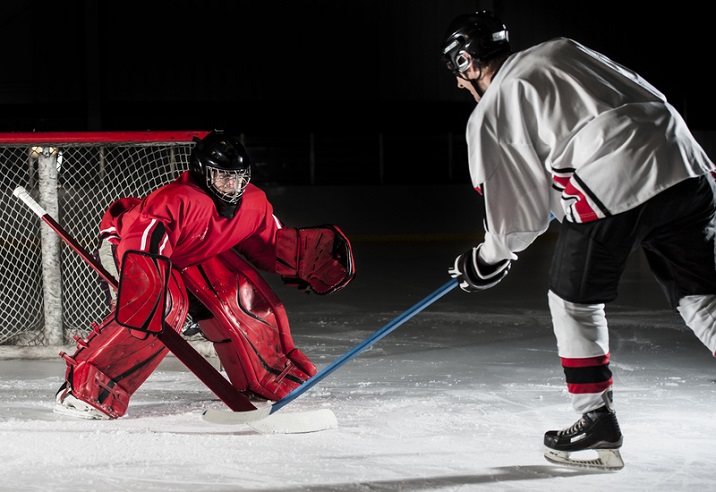
Scoring
In Ice Hockey, game is played on a point based scoring structure. The main objective of the skaters is to score goals to get points based on the goals made by the team. The team scoring highest number of points is declared winner of the game. Apart from goals the teams get points for an Assist. Usually assist is credited to two players of the goal making team the player who touches, passes, hits or deflects the puck and the this players movement supports the forward to make a goal. These assist players are given points based on their play. The defensemen who gain an assist will get one point added to the total.
A goal in this game is scored when the puck is hit across the goal line and is placed in the goal cage crossing the blockages by other teams goaltender. One point is awarded for the team who scored a goal.
A goal cannot be awarded during the following circumstances of the game −
If a player tries to kick or throw the puck into the goal cage without use of the hockey stick.
If the scoring team has more than six players on the rink at the time of goal.
If the goaltender hits the puck into the opponents goal cage crossing the centre red line.
If the goal cage has been dislodged at the time of the goal.
If the opponent team players obstruct the goaltender from blocking the goal.
Ice Hockey - Types of Goals
There are many types of goals made by the players in Ice Hockey but the points awarded for each and every goal is the same.
Even strength goal − It is scored when both the teams are with six players each on the ice.
Short-handed goal (SHG) − It is made by a team during penalty kill played by a team with less number of players as a result of a penalty to the team players.
Power play goal (PPG) − It is hit by a team during power play which is played by a team with more number of players if one of the team players gets penalized.
Own goal − It is scored when a player shoots the puck into their net but point is awarded for the other team
Empty net goal (ENG) − It is scored when the goaltender is not guarding the net as result of substitution for an extra forward player.
Penalty shot goal − It is made during a penalty shot, between an attacking player and the other team goaltender as a result of a penalty.

Penalties
In this game violation of rules results in a penalty either to a player or the team, affecting the whole play. When a player is imposed with penalty, the player needs to go to the penalty box and his team has to continue the play with five players on the ice for a certain amount of time. The penalties are being classified as major and minor penalties. Minor penalties usually timed for two minutes whereas the major penalties timed for five minutes depending upon the foul made by the players. The penalized team termed as "short-handed" on the other hand the team gaining from penalty is on a "power play."
Minor Penalties
A two-minute penalty is imposed on a player when he blocks an opponent player by the following practices and no substitution is allowed on the ice and the penalized team is on short-handed play.
- Kneeing
- Hooking with the stick
- Elbowing
- Interfering another player who has no puck
- Slashing with stick, holding with hands
- Spearing with the hockey stick
- More than six players on the ice
- High sticking (hurting the opponent players head and face area)
- Roughing (Physical fights of the players on the ice)
- Cross checking (thrashing an opponent with stick)
A 4-minute double minor penalty is charged upon the player if the opponent player oozed out blood from the penalty injury. The penalty is said to end if the penalized team scores a goal during short-handed play.
Major Penalties
A 5-minute penalty is imposed on a player when he fights on the ice with the opponent player and no substitution is allowed. Usually major penalty is charged as an extension to minor penalty if the opponent has been totally and purposely injured in fights or hit on the head and face area.
Ice Hockey - Champions
The origin of Ice Hockey is in the western countries. It is popularly known as the fast paced game in the world. As per the International Ice Hockey Federation (IIHF) ranking the Big 7 nations with good number of players and who own worlds best teams are listed as follows −
| Ranking | Country | Teams | Champions |
|---|---|---|---|
| 1st |
|
|
|
| 2nd |
|
|
|
| 3rd |
|
|
|
| 4th |
|
|
|
| 5th |
|
|
|
| 6th |
|
|
|
| 7th |
|
|
|
Ice Hockey-Hall of Fame
The top four all time popular players in Ice Hockey are as follows −
Wayne Gretzky
He is a player from Canada who played for four teams in the time period of 1979 to 1999. He was a very high scoring player who scored assists and goals for his team. He is the only player who has scored 200 points in one season. Along with it he scored 100 points consecutively in 14 seasons. He has created many records like 61 NHL record, 40 regular season record and many others.
Gordie Howe
He is a player from Canada who played in 26 seasons from NHL and 6 seasons from WHA between 1946 and 1980. Gordie Howe created many records that were broken by Wayne Gretzky. Horde won the Stanley Cup four times and Hart Trophies 6 times for being a valuable player. Along with it he also won six Art Ross Trophies due to high scoring.
Sergei Fedorov
He is a Russian Ice Hockey player who is now designated as manager of Kontinental Hockey Lead. He played for National Hockey League and won Stanley Cup three times. Along with it he also won Hart Memorial Trophy for being a valuable player. H scored 483 games in 1200 NHL games and is considered as best performer for NHL.
Viacheslav Fetisov
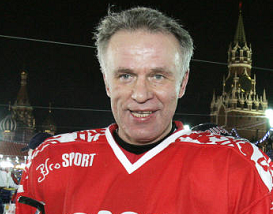
He is a Russian Ice Hockey player who played for HC CSKA Moscow for 13 seasons. After that, he joined NHL and won many Stanley Cups. He also won two gold medals in winter Olympics while being the captain of Soviet Union national team. After retirement, he coached New Jersey Devils team and helped them to two Stanley Cups.
Ice Hockey in India
Ice Hockey is particularly popular in Canada, North America and parts of Europe. It is also pretty much popular in India. However India National Ice Hockey Team is participating in the IIHF challenge cup of Asia and other championship leagues only from the year 2009, yet has gained popularity in certain parts of Northern India like Ladakh, Shimla, Dehradun and parts of Jammu and Kashmir.
The game is being played locally since the British period. Currently, around six state teams play at national level. Many foreigners are amused to play in the highest ice hockey rinks in the mountains of Ladakh and Shimla.
 Canada
Canada Russia
Russia United States of America
United States of America Czech Republic
Czech Republic Finland
Finland Slovakia
Slovakia Sweden
Sweden